I have an image, green where I want to retrieve the coordinates of the boundary from.
import cv2
green = cv2.imread(PATH)
h, w = green.shape[:2] # 644 × 600
I assume that the center of the green is located in the middle of the image.
center_x = int(w / 2)
center_y = int(h / 2)
The above will be read using cv2 whereas I also have a list of xy-points that actually represent the boundary (in meters). However, these points have a different scale. I plot these with plt.
The center of this shape is (0, 0).
So, I have the following x-points:
boundary_x = [-13.66073755, -12.43520159, -11.04384843, -9.98332564, -7.11192784,
-6.02621612, -4.71880321, -3.4512191, -1.52076807, -0.65083554,
0.32848671, 1.4180397, 2.61079625, 3.83598381, 4.56332455,
5.48307616, 7.15070888, 8.93250768, 9.84145255, 10.73775437,
11.16832875, 11.43360639, 11.58926395, 11.55000714, 11.02709822,
9.15382469, 7.74414845, 6.88892632, 5.59966095, 4.19472711,
3.71286054, 3.02690551, 2.01293197, 0.86352913, -0.76604073,
-1.69607303, -3.58023856, -7.05304689, -9.60330676, -11.42212883,
-12.0259103, -12.84910541, -13.43989501, -14.09124513, -14.44340792,
-14.58033385, -14.59593576, -14.47816773, -13.66073755]
and the following y-points
boundary_y = [0.39403631, -1.31464213, -2.90484677, -3.84934066, -6.01857721,
-7.03637054, -8.43781414, -10.07816775, -13.30072487, -14.56989554,
-15.64505512, -16.44305838, -17.06025494, -17.55754934, -17.72334407,
-17.65167922, -17.04824173, -16.16004512, -15.46884952, -14.36737278,
-13.45924195, -12.42784091, -10.96036943, -10.11943893, -7.62184824,
-0.31126985, 6.26614772, 8.57353953, 11.08919661, 13.3806628,
13.97784888, 14.58332691, 15.09121417, 15.37007017, 15.48016319,
15.33632452, 14.5088819, 12.73280014, 11.31790031, 10.12753062,
9.63155725, 8.7406104, 7.86794279, 6.59555651, 5.51401991,
4.56545763, 3.39174778, 2.29248212, 0.39403631]
I plot the two images below each other as follows:
import matplotlib.pyplot as plt
fig, (ax1, ax2) = plt.subplots(2)
ax1.imshow(green)
ax1.scatter(int(h/2), int(w/2), marker='o', color='red')
ax2.axis('equal')
ax2.plot(border_x, border_y, color='red')
ax2.scatter(0, 0, marker='o', color='red')
plt.show()
The output looks as follows:
My goal is to find for each boundary point the corresponding pixel point on the upper image.
This is relatively straightforward for the x-axis. However, for the y-axis it is different because the above pictures goes from zero to h, whereas the y-axis of the below image goes from positive to negative. Please advice!
Edit:
I tried the following unsuccessfully:
I know that the original image is 600x644. With the help of this topic I was able to create a plt.Figure of those exact measurements
px = 1.0 / plt.rcParams['figure.dpi'] # pixel in inches
Next I need to use only the content area, so exclude everything outside of the plot area. I use this answer to write the following:
fig = plt.figure(frameon=False)
fig.set_size_inches(w * px, h * px)
ax = plt.Axes(fig, [0, 0, 1, 1])
ax.set_axis_off()
fig.add_axes(ax)
ax.axis('equal')
Next, I plot and save it
border, = ax.plot(border_x, border_y, color='red')
plt.show()
fig.savefig('border.png', dpi=fig.dpi)
The figure looks as follows:
When I inspect the file, the dimensions are 644x by 600x
Now, I want to find the red contour and plot it on the original image and see if its a match.
green = cv2.imread('green.png', cv2.IMREAD_UNCHANGED)
gray = cv2.imread('border.png', cv2.IMREAD_GRAYSCALE)
thresh = cv2.threshold(gray, 100, 255, 0)[1]
contours, hierarchy = cv2.findContours(thresh, cv2.RETR_TREE, cv2.CHAIN_APPROX_SIMPLE)
cv2.drawContours(green, contours, -1, (0,255,0), 1)
Unfortunately, its not a match.. Any ideas?



